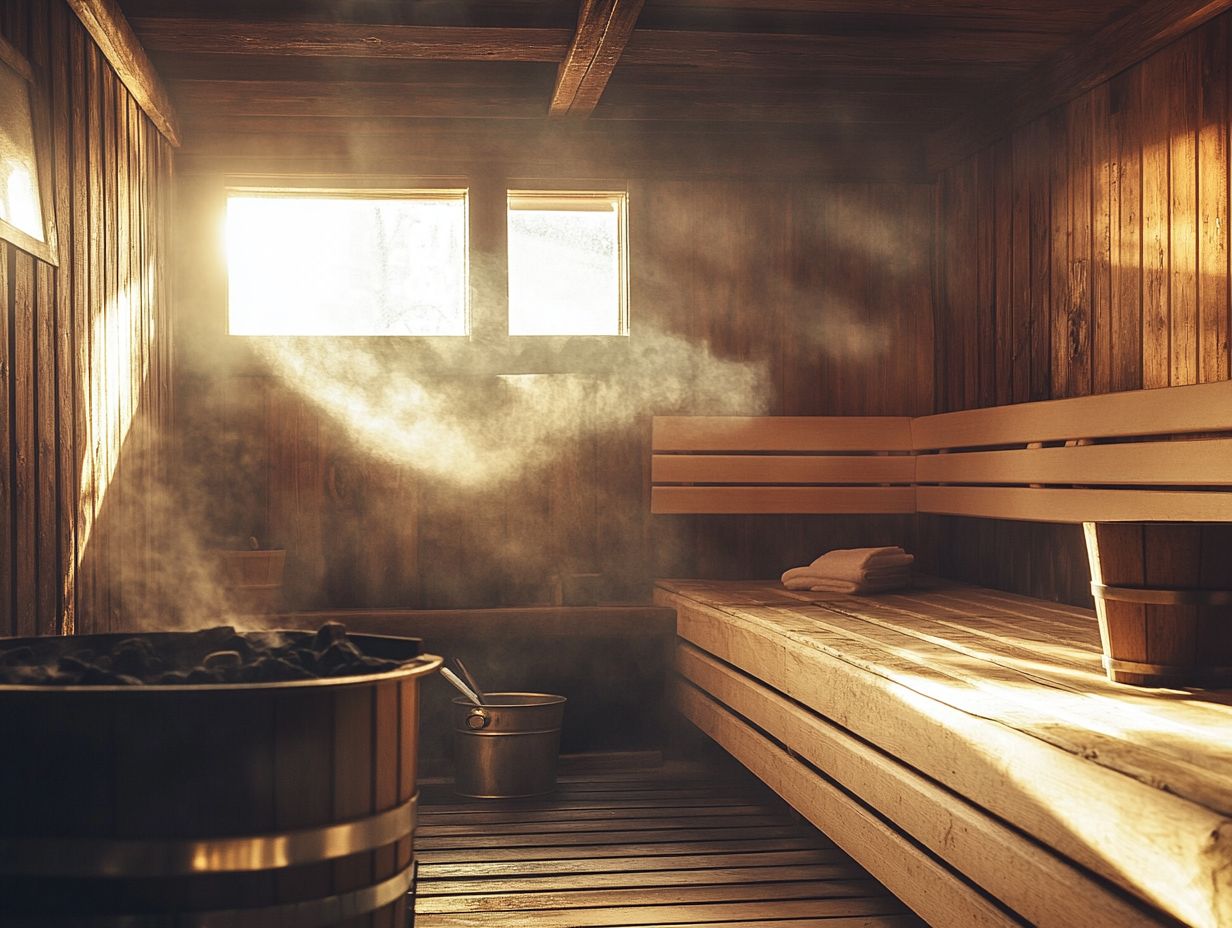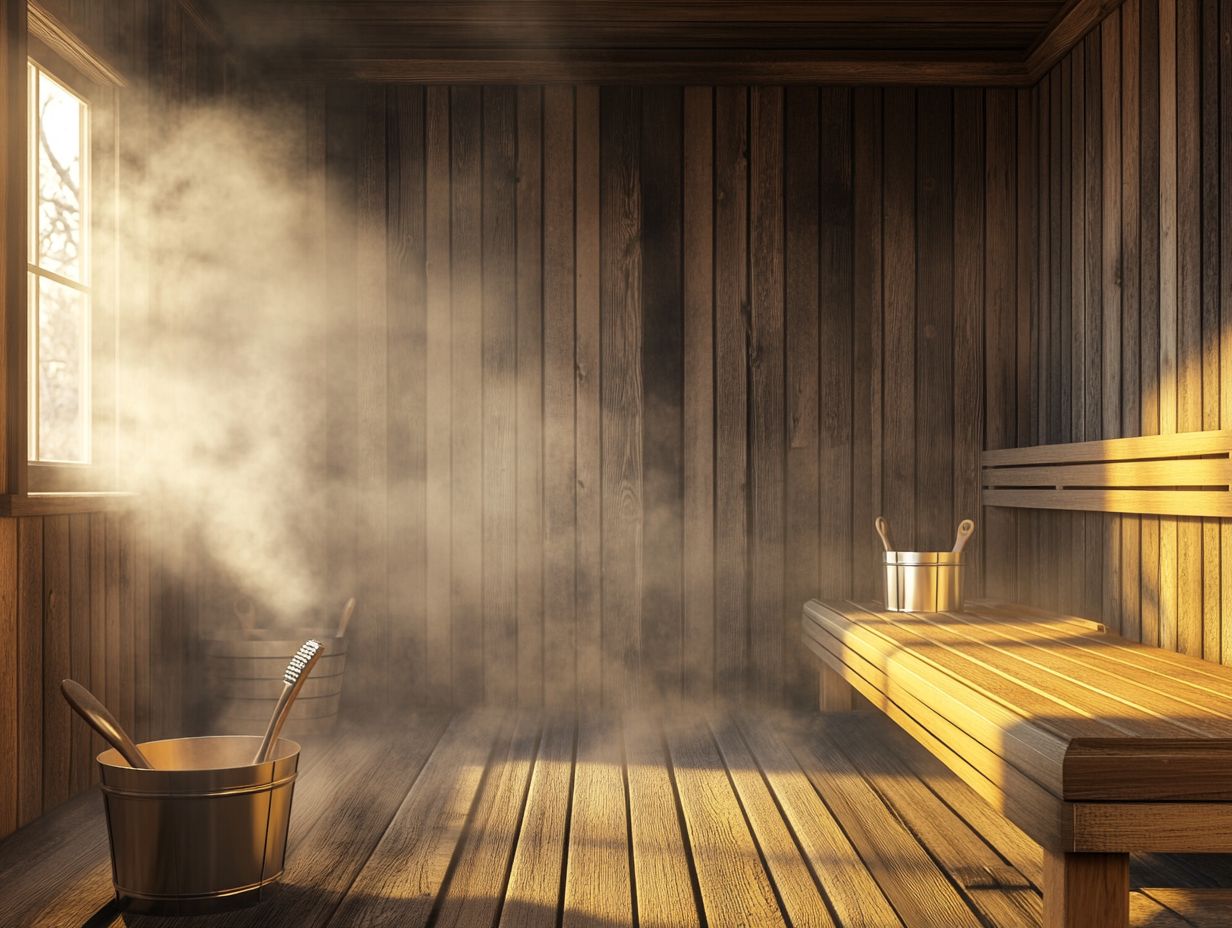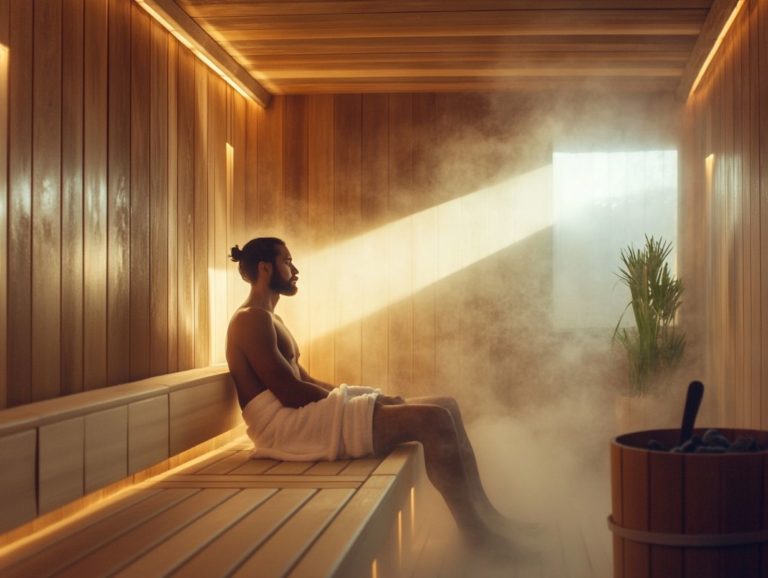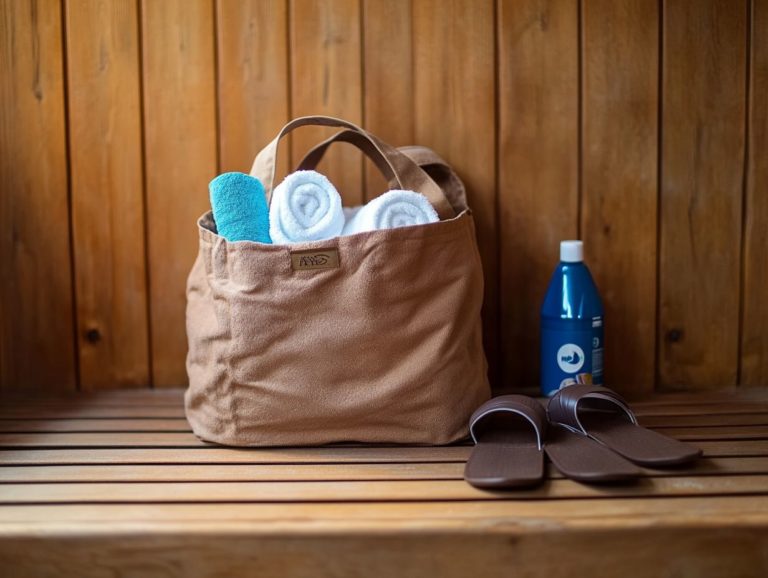How to Achieve the Best Sauna Experience?
Saunas have long been revered for their myriad health benefits, providing a fantastic blend of relaxation and rejuvenation. Whether you prefer the traditional warmth of a wood-fired sauna or the sleek efficiency of an infrared model, understanding the differences can elevate your experience.
This guide offers everything you need to know from preparing for your session and perfecting your breathing techniques to ensuring proper hydration after the sauna and enhancing your experience with the right supplements.
Embrace the warmth and wellness of saunas as you discover how to achieve the ultimate sauna experience!
Contents
Key Takeaways:

- Stay hydrated before, during, and after your sauna session to prevent dehydration and maximize the detoxifying benefits of sweating.
- Use proper breathing techniques, such as deep, controlled breaths, to help you relax and enhance your sauna experience.
- Be mindful of the recommended time and temperature for your sauna session to avoid discomfort and achieve full health benefits.
What is a Sauna?
A sauna is a small, peaceful space designed for enjoying dry or wet heat sessions. It plays an essential role in your wellness journey by promoting relaxation and rejuvenation. Originating from Finland, traditional saunas have become integral to health practices, offering remarkable benefits such as improved skin health and enhanced blood circulation.
Throughout the years, various sauna types have emerged, including infrared and steam options, each providing unique advantages tailored to your preferences.
Understanding sauna etiquette is essential for enhancing your experience and ensuring respect for the space and everyone’s comfort. By valuing hydration and choosing appropriate temperatures, you can unlock deeper wellness benefits like reduced stress levels and enhanced mental clarity. Additionally, maintaining your sauna for optimal performance can further enhance your sauna time, turning it into a complete wellness adventure!
Types of Saunas
Saunas offer a diverse array of options, from traditional to infrared varieties, as well as outdoor and indoor designs. Each type provides distinct wellness benefits and unique experiences that cater to your needs.
Traditional vs. Infrared Saunas
The main difference between traditional and infrared saunas lies in their heating methods. Traditional saunas use steam or hot stones, while infrared saunas utilize infrared light, a type of heat that directly warms your body. This difference affects not just the temperature control but also your overall experience.
In a traditional sauna, temperatures range from 150 F to 195 F, creating a humid atmosphere that can feel intense. In contrast, infrared saunas operate at lower temperatures, typically around 120 F to 140 F, allowing for longer sessions without discomfort.
The milder temperatures of infrared models encourage deeper relaxation, further enhancing detoxification. By incorporating essential oils, you can boost this experience and support your body’s natural cleansing process while fostering mental clarity and tranquility.
Preparing for a Sauna Session
Before enjoying a sauna session, it’s important to prepare thoughtfully. Follow sauna etiquette, ensure you’re well-hydrated, wear light attire, and consider taking a warm shower to enhance your overall experience.
Now that you know the essentials, why not book a sauna session and embark on your journey to relaxation and wellness?
Hydration and Clothing Tips

Proper hydration is essential before and after your sauna session. Wearing light, breathable attire can enhance your comfort and experience.
By staying adequately hydrated, you enable your body to regulate temperatures effectively and replenish the fluids lost through sweating. This maximizes the detoxifying benefits of the heat. Drink water or electrolyte-rich beverages before stepping into the sauna to ensure your body is primed for the intense warmth ahead.
Rehydration after your session is also critical; it aids in your recovery and helps maintain optimal bodily functions.
Opting for breathable, moisture-wicking fabrics can further elevate your comfort in the sauna, allowing for better temperature control and creating a truly enjoyable atmosphere.
Follow these exciting sauna tips to elevate your experience and boost your health! They support overall health benefits, including improved circulation and stress relief.
During the Sauna Session
During your sauna session, it s essential to incorporate relaxation techniques and breathing exercises while monitoring the temperature. This approach ensures your comfort and maximizes the benefits of the experience.
Proper Breathing Techniques
Incorporating proper breathing techniques during your sauna session can significantly enhance your relaxation and create a deeper mindfulness experience.
By focusing on the rhythm of your breath, you can amplify the tranquil atmosphere of the sauna. Techniques like deep breathing or the 4-7-8 method allow you, whether a novice or a seasoned user, to connect more profoundly with your surroundings.
As the heat envelops your body, practicing mindful inhalation and exhalation helps you slip into a serene state, where tension and stress can effortlessly dissolve.
When you pair these techniques with mindfulness meditation practices such as body scans or visualization you elevate the experience even further, cultivating a sanctuary of well-being that rejuvenates both body and mind.
Recommended Time and Temperature
- Aim for 15 to 20 minutes in the sauna.
- Temperatures should be between 150 F and 195 F.
Understanding these parameters is essential for anyone eager to elevate their health through sauna practices. Mastering your session duration enables you to tap into the full range of benefits, including improved circulation, stress relief, and detoxification.
Different types of saunas like classic Finnish saunas, infrared saunas, and steam rooms offer unique experiences and health perks. Although infrared saunas operate at lower temperatures, exceeding the recommended time can hinder your ability to enjoy the maximum benefits.
By following sauna rules, you ensure a safer and more enriching experience, allowing you to savor each session while adhering to the healthiest practices.
After the Sauna Session
After your sauna session, it’s essential to prioritize proper cooldown and hydration. These steps ensure your safety and enhance your body s refreshment following the heat exposure.
Taking the time to cool down and rehydrate will leave you feeling revitalized and ready to take on the day.
Cooling Down and Hydrating

Cooling down after a sauna session can be a pleasant experience. It involves taking a warm shower or indulging in a cold treatment, followed by proper hydration. This thoughtful transition from the intense heat of the sauna to a cooler environment is essential for your body to normalize its temperature.
A warm shower can soothe your muscles and allow your pores to close gradually. Cold treatments like ice baths or cold plunges can invigorate your senses and help reduce inflammation. After these restorative methods, hydrating is key to replenishing the fluids lost during sweating, supporting your body s recovery process.
Incorporating electrolyte-rich drinks can elevate your rehydration game, ensuring your muscles receive the essential nutrients they crave. By emphasizing these cooling and hydration practices, you not only facilitate recovery but also enhance your overall wellness and energy levels.
Maximizing the Benefits of Sauna
To truly maximize the benefits of your sauna sessions, consider integrating supplements and engaging in post-sauna activities. These practices can elevate detoxification, promote skin exfoliation, and enhance your overall relaxation experience.
Supplements and Post-Sauna Activities
Incorporating targeted supplements and engaging in thoughtful post-sauna practices can significantly enhance your sauna experience, especially regarding detoxification and skin health.
Consider adding antioxidants like vitamins C and E to your regimen; they effectively combat oxidative stress caused by heat exposure. Replenishing electrolytes such as magnesium and potassium is essential for restoring minerals lost during sweating. Omega-3 fatty acids also support skin elasticity and overall hydration. Techniques like dry brushing can enhance skin health through exfoliation.
After your sauna session, embrace calming activities such as gentle yoga, meditation, or a refreshing cold plunge. These practices can enhance the rejuvenation and relaxation you’ve achieved. For more tips, check out this guide on how to maximize your sauna experience. Engaging in mindful moments can deepen your sauna experience.
By weaving together supplementation and mindful post-session activities, you can craft a holistic wellness routine that nurtures both body and mind. Prioritizing water intake before and after your sauna can enhance overall hydration and support your wellness journey. If you’re interested in creating a sauna experience at home, check out these tips for building your own sauna type.
Frequently Asked Questions
What is a sauna and how can I achieve the best experience?
A sauna is a small room designed for heat sessions, typically using dry heat. To achieve the best sauna experience, prepare the room properly, adjust the temperature control to your preference, and hydrate before and after your session. Understanding sauna etiquette is also key to enjoying your time, as well as incorporating relaxation techniques.
Don’t miss out on the benefits! Start your sauna journey today by following sauna safety tips for a healthier you!
What is the ideal temperature for a sauna session?

The ideal temperature for a sauna session is typically between 150-195 degrees Fahrenheit. However, it is important to adjust the temperature control to your comfort level and always listen to your body. Remember that personal comfort should guide your experience, alongside regular assessments of your hydration levels.
How long should I stay in a sauna?
To get the most out of your sauna experience, aim for sessions of 15 to 20 minutes! The length of time you should stay in a sauna depends on your personal preference and tolerance to heat. Beginners should start with shorter sauna sessions and gradually increase the time as they become more comfortable. Consider incorporating breathing exercises during your time to enhance relaxation and promote blood circulation.
What are some benefits of taking a sauna?
Taking a sauna has numerous benefits, including:
- Relaxation
- Improved circulation
- Detoxification (the process of removing toxins from the body)
- Relief from muscle tension
- Enhanced skin health
- Better sleep
Using essential oils can boost the wellness benefits of your sauna session, making it a great addition to your wellness practices.
What should I wear during a sauna session?
It is recommended to wear loose-fitting and comfortable clothing, such as a towel or swimsuit, during a sauna session. Some may also choose to go nude, but it is important to always respect the rules and etiquette of the sauna you are using. Opting for light attire can enhance your comfort, and pairing it with sauna accessories (items such as towels or mats that enhance your sauna experience) can improve your overall experience.
How often should I take a sauna?
How often you use a sauna can vary. Some people benefit from going once a week, while others enjoy several sessions each week.
It’s crucial to listen to your body and avoid overdoing it. Regular sauna use can help keep your body refreshed and assist in removing toxins.
So, find a routine that suits you and discover the many benefits that come with it!






